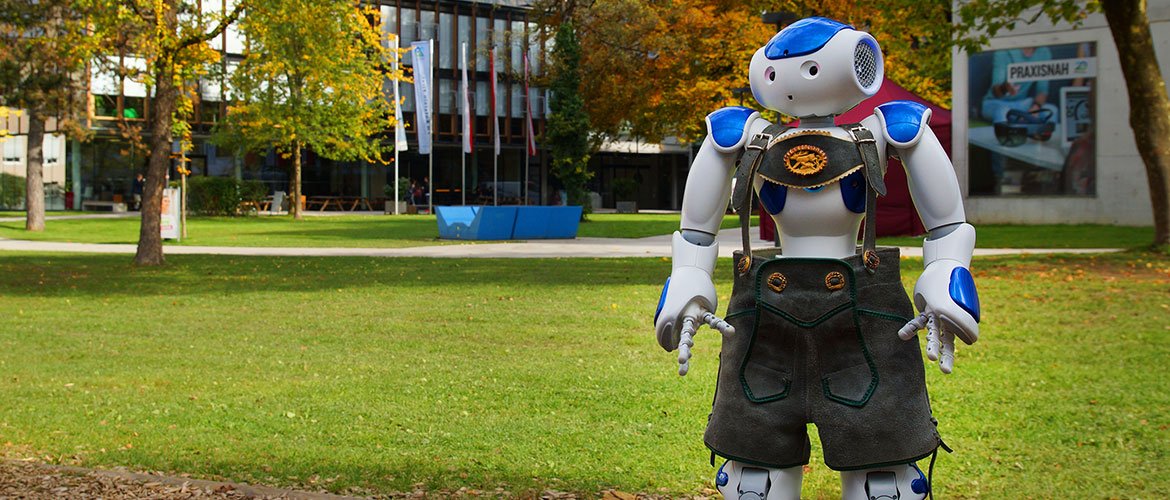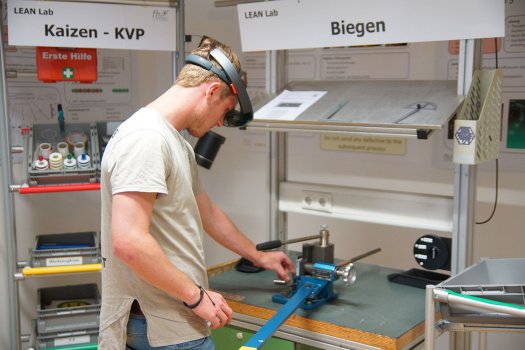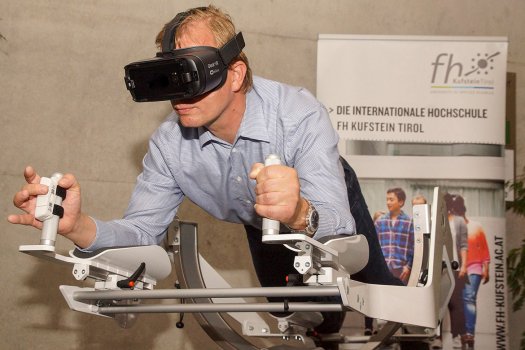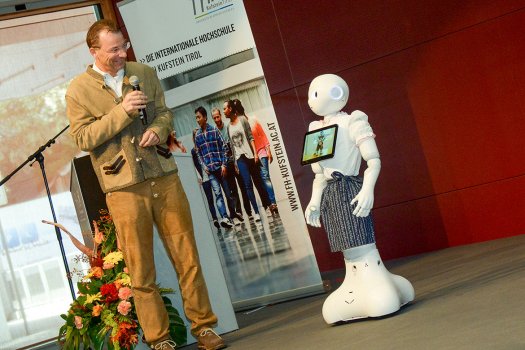
Robots, flight simulators and smart glasses: digitalization and innovation at the FH Kufstein Tirol
Three feet tall, bright eyes and a cute face with a child’s voice: meet NAO the humanoid robot. NAO has been programmed to analyze and react to the facial expressions and gestures made by us humans. The robot is the latest addition to the many innovative products used for research projects at the FH Kufstein Tirol.
Digital assistant and guide
NAO was designed to be a personal assistant and is equipped with many applications which run on a software platform custom-made by the robot’s makers. Students studying Industrial Engineering & Management are currently looking at how they may be able to use NAO for their own projects. One example is to ask NAO to check the current stock level of a particular item while a customer advisor is talking to a potential customer in a shop. Another potential use would be to show customers around a shop and guide them to the specific products they are interested in.
While the Bachelor students of Industrial Engineering & Management are still in the process of examining which potential uses NAO may have, those enrolled on the new Master’s program Smart Products & Solutions have started writing computer programs in Python – a language which NAO understands. For 20 years now the FH Kufstein Tirol has been synonymous with practical, hands-on university courses with a focus on business and technology. The new study program Smart Products & Solutions is an outstanding response to the current challenges posed by digitalization, comments Dr. Harald Mahrer, Federal Minister for Science, Research and Economy.
Via the i.ku – Innovationsplattform Kufstein the robot NAO is also available to kufgem, a university partner with its own high-tech robot by the name of Pepper. Pepper is larger than NAO and can, as part of the cooperation between the FH Kufstein and kufgem, be used by the university. Indeed, Pepper put in a special appearance at the FH Kufstein’s 20th anniversary celebrations and caused plenty of laughter among the audience. Students of the study program Industrial Engineering & Management are currently programming Pepper so it can answer questions in a similar way to a language assistant.
Flying over the Alps with an innovative fitness device
Another innovation at the FH Kufstein Tirol is the ICAROS System currently being used by the researchers at the Institute for Web Technologies & Applications (WEBTA), where experts there are working on virtual reality, developing applications for the ICAROS System and examining the device’s usability. ICAROS is a fitness tool created by a Munich-based start-up which allows people to work out while they fly through a series of virtual reality landscapes. By moving their weight, users can fly both left and right as well as up and down. As if the feeling of flying over the Alps wasn’t enough, there are additional gaming elements such as traversing a narrow gorge and collecting points by flying through brightly colored rings.
Smart glasses to support staff training
Opened a year ago, the LEAN Lab is an innovative training factory at the FH Kufstein where students have the chance to apply Lean Management Tools to real-life situations. The team at the LEAN Lab is also active in the field of research and is currently looking into several important fields connected to digitalization: industry 4.0, augmented Reality and smart glasses. The lab was commissioned by Dinkhauser Kartonagen GmbH to develop a software solution for the Microsoft HoloLens which would allow these smart glasses to visualize makeready processes. Using this augmented reality application, the company aims to make training new members of staff quicker and more efficient.
Another field where the institute is exploring the potential of digital visualization is for museum artefacts. As part of the Interreg project “Virtuelle Verbund-Systeme und Informations-Technologien für die touristische Erschließung von kulturellem Erbe” (ViSIT) the researchers have developed an innovative way of attracting more visitors to Kufstein Castle and the Veste Oberhaus museum over the border in Passau, Germany.


